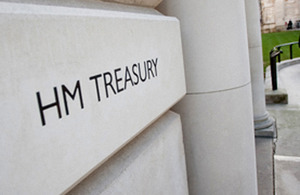31 million taxpayers to get April tax cut
31 million taxpayers are set to get a tax cut in April, the Chancellor has announced, thanks to new legislation laid in Parliament today (30 January).

- 31 million people to benefit from a tax cut, as National Insurance contributions thresholds to rise to £9,500 per year.
- A typical employee will pay around £104 less in 2020-21.
- Changes underline government’s commitments to ensure that work pays and put more money into the pockets of hard-working people.
A typical employee will save around £104 in 2020-21, while self-employed people, who pay a lower rate, will have £78 cut from their bill.
The government is today setting out the National Insurance thresholds for 2020-21, with the level at which taxpayers start to pay NICs rising by more than 10 per cent to £9,500 per year for both employed and self-employed people.
Chancellor of the Exchequer Sajid Javid said:
We’re determined to do what we promised and put more money into the pockets of ordinary hard-working people. That’s why we’re starting this government as we mean to go on, by cutting their bills.
We want everyone to feel that they can contribute to the new chapter we are opening for the economy and our country, because under this Government work will always pay.
The government is committed to keeping tax low to ensure people keep more of what they earn. Ministers have pledged that the rates of income tax, National Insurance and VAT will not rise, and the government has set out an ambition to raise the National Insurance thresholds to £12,500, putting almost £500 a year into people’s pockets.
All the other thresholds for 2020-21 will rise with inflation, except for the upper NICs thresholds which will remain frozen at £50,000, as announced at Budget 2018.
The government is setting out all of the National Insurance contributions thresholds now to ensure individuals can, as promised, benefit from April 2020.
The threshold changes will not affect low earners’ entitlement to contributory benefits such as the State Pension, with the Lower Earnings Limit and Small Profits Threshold, above which individuals start building entitlement to contributory benefits, rising with the CPI measure of inflation.
Since 2010 the personal allowance, the level at which people start paying income tax, has risen from £6,475 to £12,500, an increase of over 90% in less than a decade.
The typical basic rate taxpayer now pays over £1,200 less income tax compared to 2010-11.
In addition to increasing the NICs threshold the Government will also end the freeze to working age benefits, which has been in place since 2016. From April 2020 the majority of working-age benefits will be uprated in line with inflation.
Further information
- The changes will be made through three separate SIs laid today: “The Social Security (Contributions) (Rates, Limits and Thresholds Amendments and National Insurance Funds Payments) Regulations 2020” ; “The Social Security Benefits Up-rating Order 2020” ; and “The Tax Credits, Child Benefit and Guardian’s Allowance Up-rating Regulations 2020”.